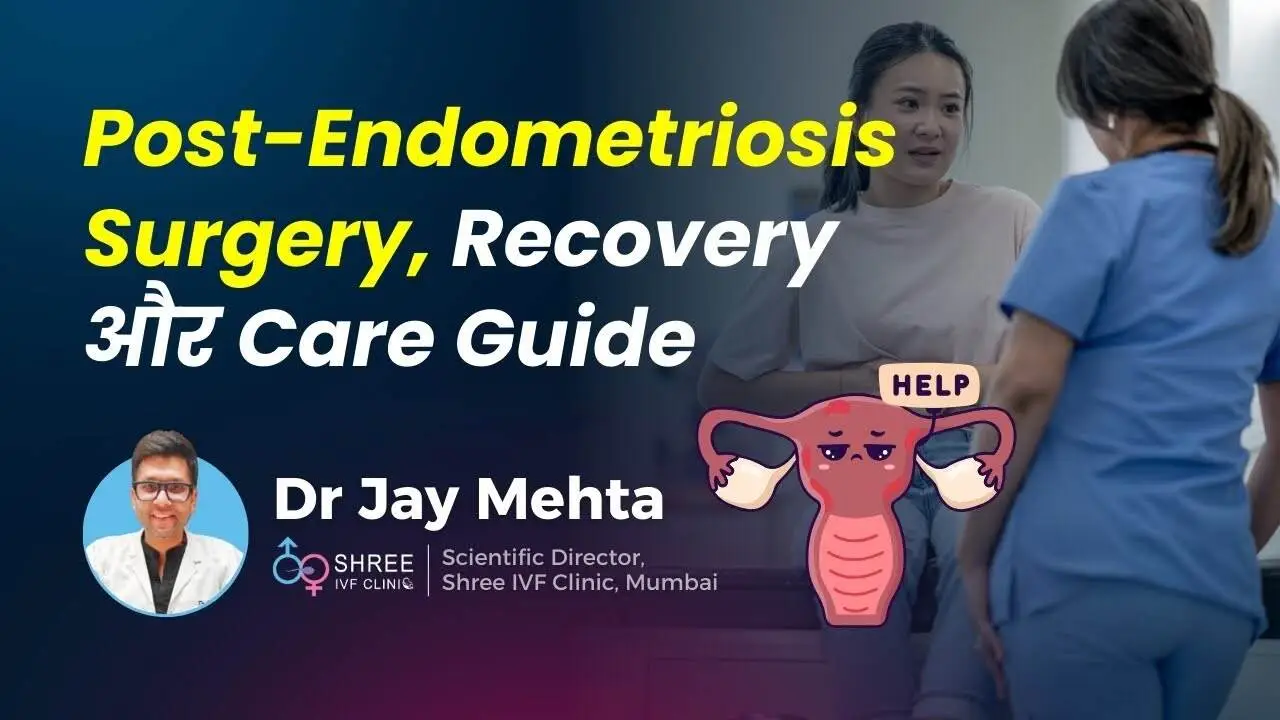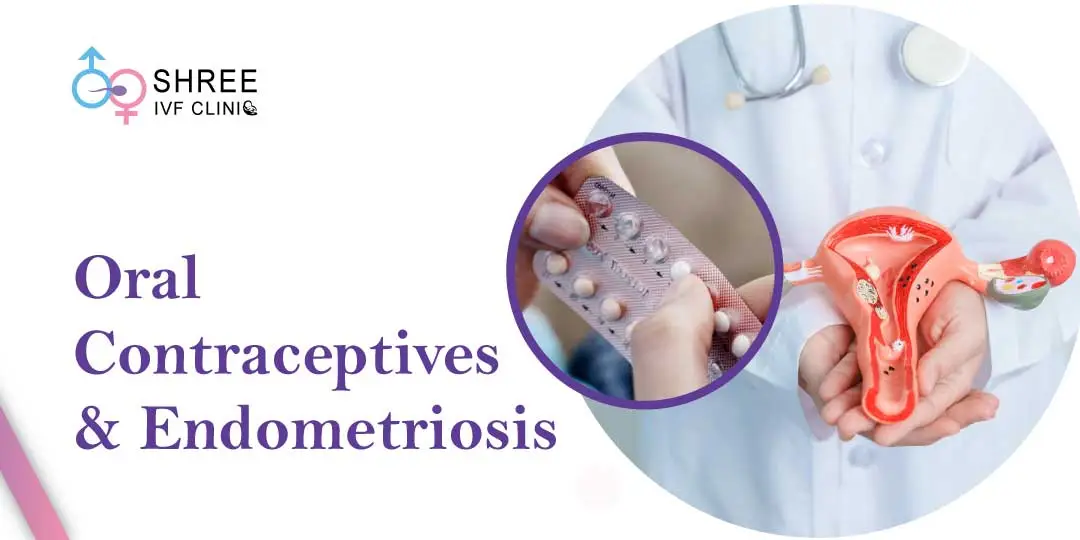एंडोमेट्रियोसिस का दर्द कहाँ होता है? Pain in Endometriosis
UPDATED ON 14 MAY. 2025
AUTHOR
Dr Jay Mehta
Scientific Director & IVF Specialist with 10+ years of experience
CONDITION
GET IN TOUCH ON
Endometriosis is a condition in which tissue that lines the uterus develops outside the uterine cavity. There is bleeding on the interior of this tissue whenever a lady gets her period. An endometriotic cyst is formed when blood collects within the ovary in this manner. It’s also known as a chocolate cyst.
Period issues may be caused by endometriosis. The first is that there is great discomfort, and the second is that the bleeding is either more or less. Consequently, the ovaries and tubes are destroyed, resulting in sterility.
How does it feel to have endometrial pain?
Endometriosis discomfort may be quite similar to severe menstrual cramps in intensity. Throughout your menstruation, you may get diarrhea. You could also have pain in your legs or engage in sexual activity. Moreover, while the pain is not limited to your period, it is often exacerbated during it.
Pelvic pain
Endometriosis causes the endometrium (uterine lining cells) to develop outside the uterus. As a result, the tissues closest to your uterus, such as your pelvis, abdomen, and reproductive organs, are the most vulnerable to malignant tumors.
Endometriosis is a painful condition that involves more than simply terrible cramping.
A variety of pain symptoms can occur in the pelvis. The most common being dysmenorrhea, as we have discussed, where there is severe pain during the menstrual cycle.
This pain during the menstrual cycle is so severe that it often requires the administration of multiple dosages of painkillers to the patient. Some of them even require injectable painkillers.
Another typical aspect of the pain can be deep-seated pain, especially while having intercourse in the pelvis, which is called deep dyspareunia. If you ever have this, kindly go to an endometriosis specialist and get examined for bowel endometriosis.
Backache
Back discomfort is a common symptom of endometriosis. This is because endometrial cells might adhere to the front of your pelvic cavity and your lower back. This might explain why Connolly had sciatica as well. This predominantly occurs because of an overstretch and overcompensation of the back muscles in response to the deep pain within the pelvis.
Even though back pain is normal, endometriosis-related back pain will be felt deep inside your body. Your problems will not be relieved by adjusting your position or seeing a chiropractor.
Pain in leg
Endometrial lesions might cause leg discomfort on or around your sciatic nerve. This discomfort might be described as follows:
- A sharp stabbing
- A quick twinge that feels like a leg cramp
- A dull throb
This soreness may make it difficult to walk easily or stand up fast in certain circumstances.
Pain during intercourse
Endometrial tissue may sometimes scar over and produce a painful nodule to the touch. These nodules may develop in the uterus, cervix, or pelvic cavity.
During sexual activity, particularly sexual intercourse, this might cause acute vaginal or abdominal discomfort.
Painful bowel movements
Endometrial cells may increase in the space between your vagina and your intestines. Rectovaginal endometriosis is the medical term for this condition. The following are some of the symptoms of this condition:
- Irritable bowel syndrome
- Urinary incontinence (difficulty passing urine)
- Diarrhoea
- Discomfort with bowel movements
Endometriosis pain may be acute and persistent, and lifestyle behaviors such as a highly processed food diet can exacerbate it.
What are the symptoms & causes of endometriosis?
One of the reasons there is no treatment for endometriosis is that a definitive cause has yet to be discovered. Even though experts are investigating various ideas and paths, the cause of its development remains unknown.
Symptoms vary from person to person and are not necessarily similar in all diagnosed women. However, the following are a few of the signs that a woman might experience:
- Chronic fatigue
- Discomfort during a sexual encounter
- Heavy periods
- Infertility
- Severe menstrual cramps
What distinguishes this from regular menstruation pain?
The most characteristic symptom of this pain is that it can be localized, but it is deep-seated.
Although endometriosis pain differs from menstruation pain in many ways, a few common characteristics set it apart from menstrual pain.
When it comes to endometriosis, there are a few things to keep in mind.
- The pain is long-lasting: for more than six months, it occurs before and during your menstrual cycle and at other times of the month.
- The pain is unbearable: Sometimes, over-the-counter pain medicines like ibuprofen (Advil) or aspirin (Ecotrin) are ineffective.
- The pain is constant: it often occurs so that you can predict it and understand how it feels.
How to differentiate between Endometriosis & Chronic Pelvic Pain?
Endometriosis typically causes localized pain, especially deep within the pelvis, and as a result, the patient can pinpoint the type of pain they are experiencing. Chronic pain is another symptom where the patient can have multiple forms of aetiology due to oversensitization of the pain pathways.
The pain manifestation can occur along different paths in the pelvis. As a result of these, the majority of the time, there can be no obvious cause in the pelvis, and the patient can still experience excruciating pain.
Typically, the patient reports to the hospital or the doctor because the pain is persistent and has been present for more than six months.
However, it is very important to note and understand at this juncture that the majority of the patients who have chronic pelvic pain don’t end up visiting a specialist, and as a result of this, what typically happens is that the obvious diagnosis of a deep endometriotic nodule is often missed, and this mistake causes the patient’s endometriosis to extend inside, thereby causing severe symptoms in the bowel as well as the urinary tract.
As a result of this, if you have been experiencing chronic pain, kindly report to an endometriosis specialist, Dr. Jay Mehta. This is so important because in our routine practice, we entertain patients who are having chronic pelvic pain from across the country.
The majority of them tend to consult us online, and many times we call them to Mumbai just for an evaluation of the pelvis.
You will be surprised to believe, as a patient, that in approximately 50% of these situations, we end up diagnosing the patient with deep endometriosis, whereas for the previous 4 to 6 years, the patient was only being treated considering there was nothing in the pelvis, and it was simply chronic pelvic pain, and this is the reason why we always state that it is better that we go to a super specialist, especially when we are suspecting endometriosis.
Because many good doctors in our country are currently not trained in the examination, as well as ultrasound or MRI-guided diagnosis of endometriosis, as a result of which the obvious disease can get missed on plenty of occasions.
How is endometriosis treated?
At this moment, one has to understand that surgical management of endometriosis remains the treatment of choice, wherein one has to go to a specialist to make sure that the entire clearance from the disease has been obtained.
A variety of medical management options are available to ensure temporary management of pain. This is available in the form of either oral contraceptive pills or progesterone. Only tablets like dienogest or GNRHA agonist injections or oral antagonist tablets like Elagolix.
The majority of the medical management that is given to the patient is only available for a maximum duration of approximately six months to 16 months.
However, in a country like India, as we are all aware, patients continue to take medical management for a prolonged period of time, which in turn grossly affects the disease process for the patient and causes a severe loss of quality of life.

5,140+
Google Reviews
397K+
subscribers
Conclusion
To get pregnant, a woman’s ovary releases an egg, which is fertilized by a sperm cell and then attaches itself to the uterine wall to grow into a baby. Doctors encourage women with endometriosis to become pregnant as quickly as possible since the problem worsens over time if left untreated.
Shree IVF Clinic provides the best endometriosis treatment in Mumbai. Call us now at 1800-268-4000 to schedule your appointment! For more information on endometriosis, speak to our experts now!
AUTHOR
Dr Jay Mehta
Scientific Director & IVF Specialist with 10+ years of experience
CONDITION
GET IN TOUCH ON
Share Article on
Recommended Reading
Does Endometriosis Affect the Value of the Anti-mullerian Hormone (AMH)?
Yes, endometriosis can impact your AMH level by damaging the ovaries, fallopian tubes, and surrounding pelvic area.
Post-Surgical Care & Recovery After Endometriosis Surgery
Patients typically discharged within 48 hours after minimally invasive surgery. Rest 1-2 days, avoid heavy lifting/exercise for 10 days
Role of Oral Contraceptive Pills in Endometriosis Management
Oral contraceptive pills help prevent disease recurrence and are a safe, effective method for managing symptoms and postponing fertility. Always consult your gynecologist for advice




